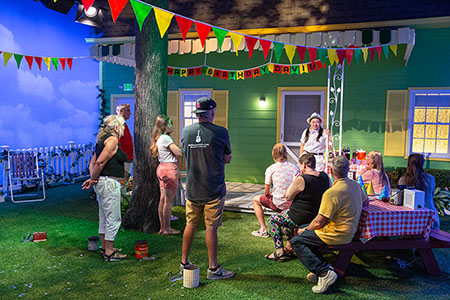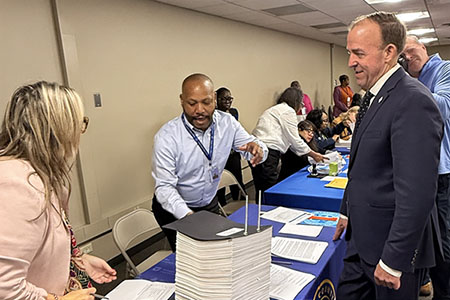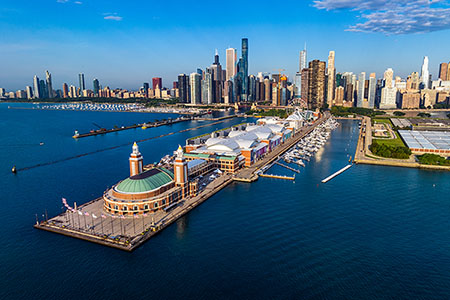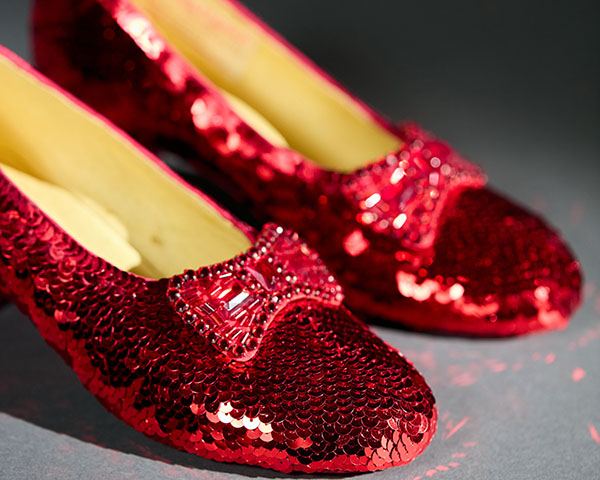Howard Swibel: My mother chose the name ‘Marina City’ Jan. 21, 2008 – If Bertrand Goldberg had had his way, the landmark on the Chicago River north of the Loop would be called “River City.” The architect, known informally as “Bud,” would later design the complex southwest of the Loop known as River City. But as planning began in 1959, talking sense into Goldberg was Seena Swibel. Born in 1926, she was the wife of Marina City developer Charles Swibel (1927-1990) and mother of Howard and Larry. “Bud came up with a bunch of different names and his preference was River City,” said Howard Swibel last week. “But my mother loved the name Marina City. And she told me she remembers discussing with Bud and insisting that it be Marina City. She liked the idea because the marina was there.”
Interviewed for the Marina City history project, “City Within A City,” Howard discussed his father’s career and association with Marina City, from meeting union leader William McFetridge in the mid-1950s to the sale of the commercial property, and conversion of apartments to condominium units, in 1977. McFetridge invested his union’s pension fund in the development of Marina City, but according to Howard it was his father who steered McFetridge toward a housing project. The idea eventually evolved into the mixed-use complex it is today. The career of Charles Swibel – chairman of the Chicago Housing Authority from 1963 to 1982 – was not without controversy. “He lived with negative publicity for decades,” said Howard. “We became very familiar with it. I became a student of journalism where I would read the specific facts and the sentences and I would then interview my father and say, ‘What's the real truth?’ And I would find out that sometimes it was just flatly made-up. Other times, it was the insinuation or implication that was negative, when in fact they didn’t have any information at all.” Howard explained how his father negotiated the purchase of an option to buy for $3 million the site on which Marina City was constructed. It was one of the first “air rights” deals in Chicago, development of the empty space above a property. Illinois Central Railroad owned the land and its railroad tracks, though long abandoned, are still visible on the marina level. The decision to convert Marina City residences from apartments to condominium units, says Howard, was encouraged by Continental Illinois National Bank and Trust Company, which owned the mortgage on the complex. Interest on the mortgage was being paid but progress with the principal was slow. Proceeds from the sale of condominium units allowed the loans to be refinanced. Charles ended up owning the commercial property, which he then sold to a limited partnership led by Dallas investor Ellison Trine Starnes, Jr. Howard suspects that Continental identified Starnes as a potential buyer and introduced him to Charles. Why did he sell the commercial property to Starnes? Says Howard, it was “an offer he couldn’t refuse.” With no equity investment in the property, the selling off of the commercial property – in a single transaction – was lucrative, including $11.6 million for the office building in 1983. But it was not without heartache as property values sharply declined under the Starnes group. “These people had represented themselves as being savvy operators. And then they got themselves into financial distress.” Howard says what he remembers most about his father is his warmth and charm. “He had amazing charisma. It’s an intangible quality. There were 800 people at his funeral. People came up to me and told me about how special he was. He just had a way of charming people. And they liked to be around him. He had an insight. He understood people’s needs. My father was always the diplomat, the statesman, the go-between. And he was a very proud father.” More of the interview with Howard Swibel will be available soon on the “City Within A City” history pages.
|















